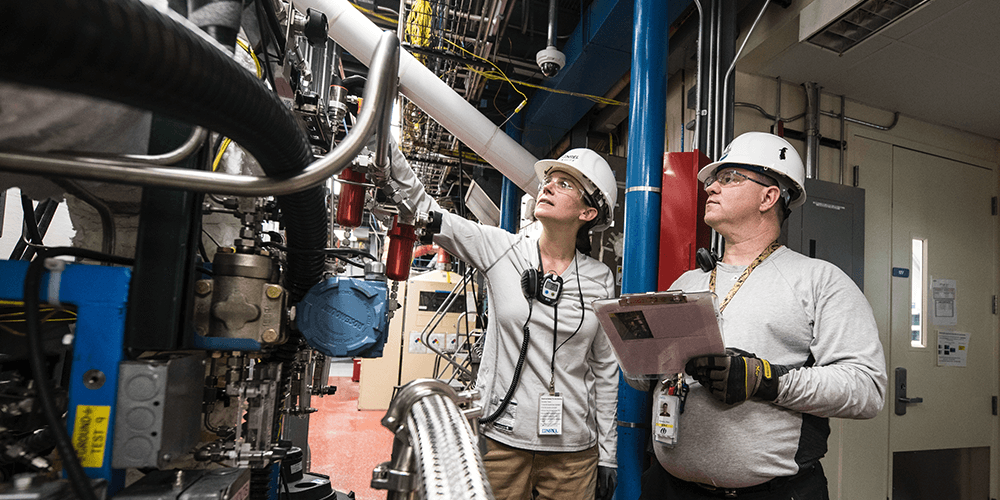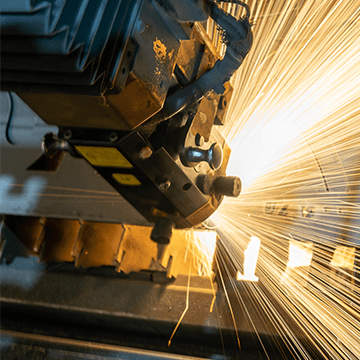- Solutions
- Products
- Community
- Resources
- Company
Create incredible candidate experiences that communicate your brand, mission, and values with recruitment marketing solutions.
Learn moreCommunicate effectively and efficiently with the candidates that can drive your business forward.
Learn moreSelect the right candidates to drive your business forward and simplify how you build winning, diverse teams.
Learn moreHelp your best internal talent connect to better opportunities and see new potential across your entire organization.
Learn moreCommunicate collectively with large groups of candidates and effectively tackle surges in hiring capacity.
Learn moreAccess tools that help your team create a more inclusive culture and propel your DEI program forward.
Learn moreRebound and respond to the new normal of retail with hiring systems that are agile enough to help you forge ahead.
Learn moreAccelerate the hiring of key talent to deliver point of care and support services that meet and exceed your promise of patient satisfaction.
Learn moreAttract and engage candidates with technical competencies, accelerate hiring for much-needed skills, and advance expertise within your valued workforce.
Learn moreSimplify how you recruit finance, insurance, and banking candidates with a unified platform built to match top talent with hard-to-fill roles.
Learn moreYour business strategy depends on your people strategy. Keep both in lockstep with the iCIMS Talent Cloud.
Learn moreBuild an engaging, high-converting talent pipeline that moves your business forward.
Learn moreDeliver the innovation your talent team needs, along with the global scale and security you demand.
Learn moreDeliver tailored technology experiences that delight users and power your talent transformation with the iCIMS Talent Cloud.
Learn moreThe #1 ATS in market share, our cloud-based recruiting software is built for both commercial and large, global employers.
Learn more Talk to salesAttract the best talent for your business with powerful, on-brand career websites that excite candidates and drive engagement.
Learn more Talk to salesBuild talent pipelines, engage candidates with multi-channel marketing campaigns, and use machine learning to automatically surface the right talent for the job.
Learn more Talk to salesEmpower candidates with automated self-service, qualification screening, and interview scheduling through an AI-enabled digital assistant.
Learn more Talk to salesSimplify employee onboarding with automated processes that maximize engagement and accelerate productivity.
Learn more Talk to salesCompliment your sourcing and engagement efforts with award-winning lead scoring and advanced campaign personalization.
Learn more Talk to salesImprove employee experience, retention, and reduce internal talent mobility friction with the iCIMS Opportunity Marketplace.
Learn more Talk to salesVerify skills with game-changing levels of automation and simplicity to improve the quality of hire at scale.
Learn more Talk to salesModernize, streamline, and accelerate your communication with candidates and employees.
Learn more Talk to salesTransform the talent experience by showcasing your authentic employer brand through employee-generated video testimonials.
Learn more Talk to salesGet robust analytics that help you make sense of your data and illuminate your talent pool.
Learn moreSimplify recruiting, dynamically engage talent, and reduce hiring bias with job matching and recruiting chatbot technology.
Learn more Talk to salesGet exclusive intel on industry and market trends along with expert one-on-one advice.
Learn more Talk to salesThe #1 ATS in market share, our cloud-based recruiting software is built for both commercial and large, global employers.
Learn more Talk to salesAttract the best talent for your business with powerful, on-brand career websites that excite candidates and drive engagement.
Learn more Talk to salesBuild talent pipelines, engage candidates with multi-channel marketing campaigns, and use machine learning to automatically surface the right talent for the job.
Learn more Talk to salesEmpower candidates with automated self-service, qualification screening, and interview scheduling through an AI-enabled digital assistant.
Learn more Talk to salesSimplify employee onboarding with automated processes that maximize engagement and accelerate productivity.
Learn more Talk to salesCompliment your sourcing and engagement efforts with award-winning lead scoring and advanced campaign personalization.
Learn more Talk to salesImprove employee experience, retention, and reduce internal talent mobility friction with the iCIMS Opportunity Marketplace.
Learn more Talk to salesVerify skills with game-changing levels of automation and simplicity to improve the quality of hire at scale.
Learn more Talk to salesModernize, streamline, and accelerate your communication with candidates and employees.
Learn more Talk to salesTransform the talent experience by showcasing your authentic employer brand through employee-generated video testimonials.
Learn more Talk to salesGet robust analytics that help you make sense of your data and illuminate your talent pool.
Learn moreSimplify recruiting, dynamically engage talent, and reduce hiring bias with job matching and recruiting chatbot technology.
Learn more Talk to salesGet exclusive intel on industry and market trends along with expert one-on-one advice.
Learn more Talk to salesHow a beloved restaurant hires 40,000+ annually with a great candidate experience.
Learn moreThousands strong, our global community of talent professionals includes creatives, innovators, visionaries, and experts.
Learn moreTogether we’re creating the world’s largest ecosystem of integrated recruiting technologies.
Learn moreExplore our network of more than 300 certified, trusted third-party service and advisory partners.
Learn moreUncover unique market insights, explore best practices and gain access to talent experts across out library of content.
Get resourcesExpert guidance about recruitment solutions, changes in the industry, and the future of talent.
Learn moreStay up to date with the latest terminology and verbiage in the HR software ecosystem.
Learn moreEmployers everywhere improve hiring efficiently and save money using iCIMS. Estimate the potential business value you can achieve.
Learn moreDive into the Class of 2023 Report highlighting this cohort’s expectations and where employers are willing — and able — to meet them.
Watch nowPartner with iCIMS to build the right strategies, processes, and experience to build a winning workforce.
Learn moreExpert guidance about recruitment solutions, changes in the industry, and the future of talent.
Learn moreThe iCIMS Talent Cloud delivers a secure, agile, and compliant platform designed to empower talent teams, job seekers, and partners with advanced data protection and privacy.
Learn moreView press releases, media coverage, and the latest hiring data. See what analysts are saying about iCIMS.
Learn moreiCIMS is the Talent Cloud company that empowers organizations to attract, engage, hire, and advance the talent that builds a winning workforce.
Learn moreGet to know the award-winning leadership team shaping the future of the recruiting software industry.
Learn moreWe believe the future of work isn't something that "happens" to you. It's something you create. We actively create the future of work with our customers every day.
Learn moreiCIMS is committed to being a responsible and ethical corporate citizen, which is why Environmental, Social and Governance (ESG) initiatives are strategic imperatives.
Learn moreStreamline your tech stack and take advantage of a better user experience and stronger data governance with ADP and the iCIMS Talent Cloud.
Learn moreThe combined power of iCIMS and Infor helps organizations strategically align their business and talent objectives.
Learn moreOur award-winning partnership with Microsoft is grounded in a shared desire to transform the workplace and the hiring team experience.
Learn moreOur partnership with Ultimate Kronos Group (UKG) supports the entire talent lifecycle by bringing frictionless recruiting solutions to UKG Pro Onboarding.
Learn moreLet’s get in touch. Reach out to learn more about iCIMS products and services.
Learn more

More and more manufacturers are short-staffed, and that’s unlikely to change anytime soon. The industry is enjoying a period of modest growth; coupled with the fact employees are retiring faster than recruiters can replace them, and manufacturers are going to live with this reality for some time.
Manufacturers need to get good at finding new qualified workers fast – here are three conversations recruitment teams need to start having:
Manufacturers need to prioritize their employer brands
Nearly half (45 percent) of manufacturers cite the inability to attract and retain workers as the biggest threat to their business. That threat isn’t off in the distant future – it’s already here. Three out of every ten manufacturers have turned down new business because they can barely handle the orders they have today.
That’s more a people problem than it is a production problem; manufacturers’ inability to maintain and grow their workforces costs them opportunities and eats into their bottom lines.
Manufacturers need to focus on their employer brands and, by extension, their employer value propositions. In the United States, there’s a considerable nostalgia for manufacturing as a profession; however, few want to do these jobs today, largely because they hold an image of manufacturing that’s extremely outdated.
Modern manufacturers rely heavily on automation, and that’s created new job categories beyond the traditional blue-collar ones. While the public understands times have changed, the decline of manufacturing candidates from younger generations points to a serious perception problem.
Compelling career portals and a social media strategy that highlight benefits, career opportunities and an engaging work culture go a long way, but the issue runs deeper still. Employers need to be convincing, and so far they haven’t been; at the very least, there’s a long way to go before they write over outdated and longstanding perceptions about what it means to work in manufacturing.
Until manufacturers start attracting job seekers new to the industry, they’re going to inevitably struggle to fill open roles.
Combat a shrinking workforce with employee referrals
Employee referral technologies are relatively inexpensive to operate and result in consistently high performers. In fact, about one-third of companies say employee referrals are their top source of quality candidates.
However, referral programs can fall by the wayside. If this is the case, recruitment teams need to stop and assess the problem:
|
Common challenges with employee referral programs |
Potential solutions |
|
Referrals aren’t top of mind for your employees; they’re focused on their typical day-to-day duties |
Work with department heads and team leads to schedule time for referral conversations on a periodic basis |
|
Employees refer candidates outside existing, formal channels |
Ensure your referral process is easy and all employees understand how it works; pre-generated social posts make it easier for employees to share openings by giving them ideas to work with |
|
Referrals are inconsistent across teams and fluctuate over time; participation is sporadic and hard to predict |
Employees may not be aware of openings outside their immediate team or business unit; communicate openings across the business regularly and incentivize participation |
|
Employees consistently report not knowing who to refer; of the candidates they do, few are hired |
Pull employees’ networks into a collective database (with their permission, of course); use matching technology to pair potential candidates with current and projected openings |
Increase workforce diversity
Manufacturers have long struggled to diversify their workforces.
To give a sense of scale to the situation, men make up 53 percent of the overall workforce in the United States, yet they represent 71 percent of the manufacturing workforce. That workforce is also aging quickly. Large pockets of retirees are going to be difficult to replace without recruiting groups typically underrepresented on the manufacturing floor – including an increased focus on younger workers, women and minorities.
Sourcing is key to improving diversity hires. Hiding names and photos on resumes is a great way to prevent bias if you’re already attracting a diverse candidate pool. If not, you’re not addressing the root of the problem.
Manufacturing jobs are changing too. As automation increasingly becomes a part of manufacturing processes, employers require a different set of technical, in-demand skills. Employees with those skills may not look at manufacturers when considering the next step in their careers; it’s up to employers to make job seekers aware of this option and champion the industry as somewhere they should want to work.
Ready for more ideas?
Read our 5 Manufacturing Insights: How to Grow and Maintain Your Workforce to learn how your team can face today’s hiring challenges.
and receive free tips on how to attract, engage, hire, & advance the best talent.




